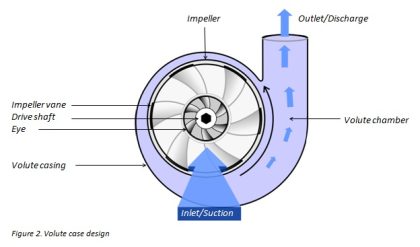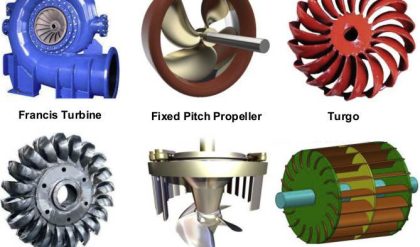Reynolds number is the ratio of the inertial force of flowing fluid to the viscous force of the fluid. Inertial force of the fluid can be expressed as :
Inertial force, Fi = mass X acceleration
= (density X volume) X (Velocity / time)
= (density X Area) X (Velocity X Velocity)

Viscous force, Fv = Shear stress X area

Therefore, Reynolds number is given by :

Where, v = velocity of fluid flow
D = diameter of glass tube

Apparatus Required
- A Tank filled with water
- A small reservoir filled with colored fluid or dye
- A glass tube with bellmouth entrance
- A measuring tank
- Regulating valve at the outlet of glass tube and at inlet of dye injector
- A stopwatch

Fig 1: Reynolds Experiment Apparatus
Test Procedure
Test Procedure of Reynolds experiment is as follows:
- Fill the tank with water and leave it for some time as the water in the tank should come to rest.
- Now fill the reservoir with a dye (generally potassium permanganate solution) which is nothing but colored fluid. The weight density of dye should be same as that of water.
- Record the temperature of water.
- Allow the flow through the glass tube at a very low rate by partially opening the outlet valve of a glass tube.
- When the flow is stable, open the inlet valve of dye injector and allow the colored fluid to flow through the glass tube.

Fig 2: Reynolds Apparatus Working Condition
- Observe the appearance of dye filament in the glass tube and note down the type of flow obtained for that particular discharge.
- Take a stopwatch and note down the volume of water collected in measuring for certain interval of time.
- Repeat the above procedure for different discharge rates and calculate Reynolds’s number for each type of flow.
Observations
Following observations should be made while passing colored fluid through glass tube.
Check the formation or appearance of dye filament in the glass tube for different velocities and note down the flow type based on its appearance from below three cases.
Case 1: If dye filament forms straight line, then it is called as laminar flow.
Case 2: If dye filament flows in a slightly wavy manner, then it is said to be transition flow.
Case 3: If dye filament diffuses over the entire cross section of tube while passing, then it is called as turbulent flow. All of these three flows are represented in below figure.

Fig 3: Types of Flows in Pipe Flow
Diameter of glass tube, D =
Measuring tank dimensions (breadth and width) =
Table 1: Reynolds Experiment Observations
| S.no | Observed Flow type | Time (t) (seconds) | V, Volume of Water collected in t seconds ( m3 ) | Discharge (Q) (m3/sec) | Velocity, v (m/sec) | Reynolds Number, Re |
| 1 | Laminar | |||||
| 2 | Transition | |||||
| 3 | Turbulent |
Calculations
Volume of water collected in tank in t seconds, V = area of tank X Rise of water level in t seconds
Discharge, Q = Volume / time
Velocity of flow, v = Discharge / area of glass tube
Reynolds number, Re =
Result
Reynolds number of flow =


